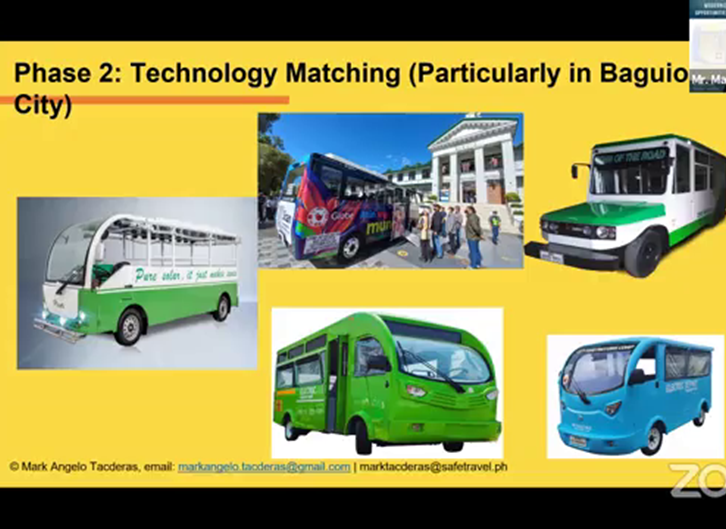Effective Transit Advertising Philippines to Grow Your Audience
Effective Transit Advertising Philippines to Grow Your Audience
Blog Article
Comprehending the Role of Transit Advertising in Enhancing Brand Visibility and Customer Engagement
Transportation advertising has arised as a critical element in the advertising and marketing landscape, offering one-of-a-kind chances for brands to raise their exposure and involve customers properly. With the capacity to reach a captive and varied target market during their everyday commutes, these advertising and marketing techniques are not just concerning visibility; they have to do with creating significant links with possible customers. As we check out the complex benefits and innovative strategies within transportation advertising, it ends up being necessary to think about how these aspects jointly affect customer assumption and actions, questioning regarding their long-lasting influence on brand name commitment.
Definition of Transit Advertising
Transportation advertising and marketing describes the method of promoting products, services, or brand names via promotions put in and around public transportation systems. This form of marketing includes a variety of placements, consisting of posters on trains and buses, electronic screens at transit stations, and wraps on the exterior of cars. It aims to get to a diverse target market, profiting from the high foot traffic related to public transportation.
Transit advertising and marketing is purposefully positioned to record the interest of commuters, that usually invest considerable time taking a trip or waiting. By incorporating advertisements right into the everyday routines of people, brands can create a lasting impact and foster brand name recognition. The tool is particularly effective in city environments, where public transport is a primary setting of travel.
In addition, transit marketing can help with local targeting, allowing organizations to reach details demographics based on transportation routes and terminal locations. As metropolitan populations expand and the use of public transportation increases, this advertising and marketing method has actually obtained importance as a vital element of incorporated marketing techniques. The dynamic nature of transit advertising and marketing, incorporated with its ability to involve customers in a captive setting, underscores its value in contemporary advertising and marketing practices.
Benefits of Transit Marketing
The performance of transit advertising and marketing depends on its ability to provide a multitude of benefits to brands seeking to improve presence and engagement. One of the primary advantages is the substantial reach it supplies; transportation ads can properly target varied demographics across urban areas, reaching both pedestrians and commuters alike. This broad exposure considerably improves brand name understanding.
One more advantage is the high regularity of impressions. As transportation cars follow well-known routes and quit at numerous areas, they produce repeated direct exposure that strengthens brand messages. This frequency promotes experience, which is important in customer decision-making.
Transit marketing is also affordable compared to other media systems. Offered its extensive reach and capacity for high perceptions, brands often experience a reduced price per thousand impacts (CPM), optimizing their marketing budget plan.
Additionally, transportation ads can produce a sense of community connection. By lining up with regional transit systems, brand names can resonate with local audiences and foster a sense of local satisfaction. This local method boosts brand name loyalty and engagement, making transit advertising and marketing an engaging choice for organizations aiming to strengthen their existence on the market.

Reliable Techniques for Transportation Campaigns
To make the most of the impact of transportation campaigns, brands should take advantage of tactical preparation and execution customized to their target audience. First, recognizing the market characteristics of the audience making use of public transportation is critical. This enables brand names to create individualized messaging that resonates with prospective consumers.
Next, choosing the appropriate transit tools is essential. Whether using bus covers, subway posters, or digital displays, each tool has distinct benefits that can boost visibility. For circumstances, vibrant visuals on bus wraps can bring in attention, while electronic ads can be upgraded frequently to show prompt promos.
Additionally, incorporating a cohesive branding method throughout transit platforms makes sure uniformity and reinforces the brand's identity. Using remarkable taglines and attractive styles will certainly enhance brand name recall amongst travelers.
By using these methods, brand names can efficiently harness the potential of transit advertising and marketing, promoting higher awareness and link with their target audience. Inevitably, a well-executed transit campaign can drive considerable growth in brand name exposure and consumer interaction.

Determining Influence and Engagement
In evaluating the performance of transportation marketing campaign, precise measurement of effect and interaction is important for brand names seeking to optimize their advertising techniques. Metrics such as reach, regularity, and perceptions provide foundational data to analyze exposure. Analyzing these variables assists determine the amount of possible customers are revealed to the advertisements throughout their daily commutes.
Involvement can be further gauged via consumer communications, such as site web traffic, social networks states, and direct feedbacks to calls-to-action featured in the advertisements. Making use of tools like QR codes or special URLs can help with monitoring of consumer habits straight linked to transportation projects. Surveys and comments devices also act as useful methods to collect qualitative information on customer perceptions and recall of the ad.
Moreover, advanced analytics and acknowledgment models can associate important link transit exposure with succeeding buying actions, supplying insights right into the roi. By utilizing a thorough approach that integrates measurable and qualitative measures, brands can create a nuanced understanding of their transit marketing influence. Ultimately, this data-driven technique allows brand names to improve their projects, guaranteeing they reverberate efficiently with target audiences and improve general brand exposure.
Situation Research Studies of Successful Campaigns
Successful transit advertising projects act as engaging examples of exactly how efficient methods can boost brand exposure and interaction. Transit Advertising Philippines. One noteworthy situation is the "I Love New York" project, which changed the city's picture and drew in countless travelers. By utilizing subway ads, signboards, and bus covers, the campaign created a solid, natural brand identification, resulting in a considerable uptick in tourism and neighborhood service patronage
One more exemplary project is Coca-Cola's "Share a Coke" campaign, which leveraged transportation advertising and marketing to individualize the brand name experience. By featuring popular names on advertising materials across numerous transit platforms, Coca-Cola promoted a deeper psychological link with consumers, urging them to share their experiences on social networks.
Additionally, the "Got Milk?" project successfully utilized public transport ads to get to a broad target market, strengthening the message of the significance of milk in a well balanced diet. The project saw a measurable rise in milk consumption in target demographics.
These study show that when executed attentively, transportation marketing can significantly boost brand exposure, foster customer engagement, and drive quantifiable results, showing its important duty in contemporary marketing strategies. - Transit Advertising Philippines
Conclusion
To conclude, transit advertising and marketing functions as a vital tool for improving brand name visibility and promoting customer engagement. By using purposefully placed ads within basics public transport systems, brands can successfully reinforce and get to diverse audiences recognition with regular direct exposure. The implementation of targeted messaging and innovative techniques additionally amplifies the impact of transit campaigns. Eventually, the capability to determine interaction and examine effective case studies underscores the effectiveness of transit marketing in driving brand loyalty and consumer interactions.
Transportation marketing has actually emerged as a critical element in the advertising and marketing landscape, supplying special read here chances for brands to boost their presence and engage customers effectively.Furthermore, transportation advertising can help with local targeting, permitting services to reach specific demographics based on transportation paths and station areas.In examining the effectiveness of transportation marketing campaigns, accurate dimension of effect and involvement is crucial for brands looking for to enhance their marketing methods.Effective transportation advertising projects serve as engaging instances of exactly how effective methods can elevate brand name presence and engagement.In final thought, transportation advertising and marketing serves as a vital device for enhancing brand name presence and promoting customer engagement.
Report this page